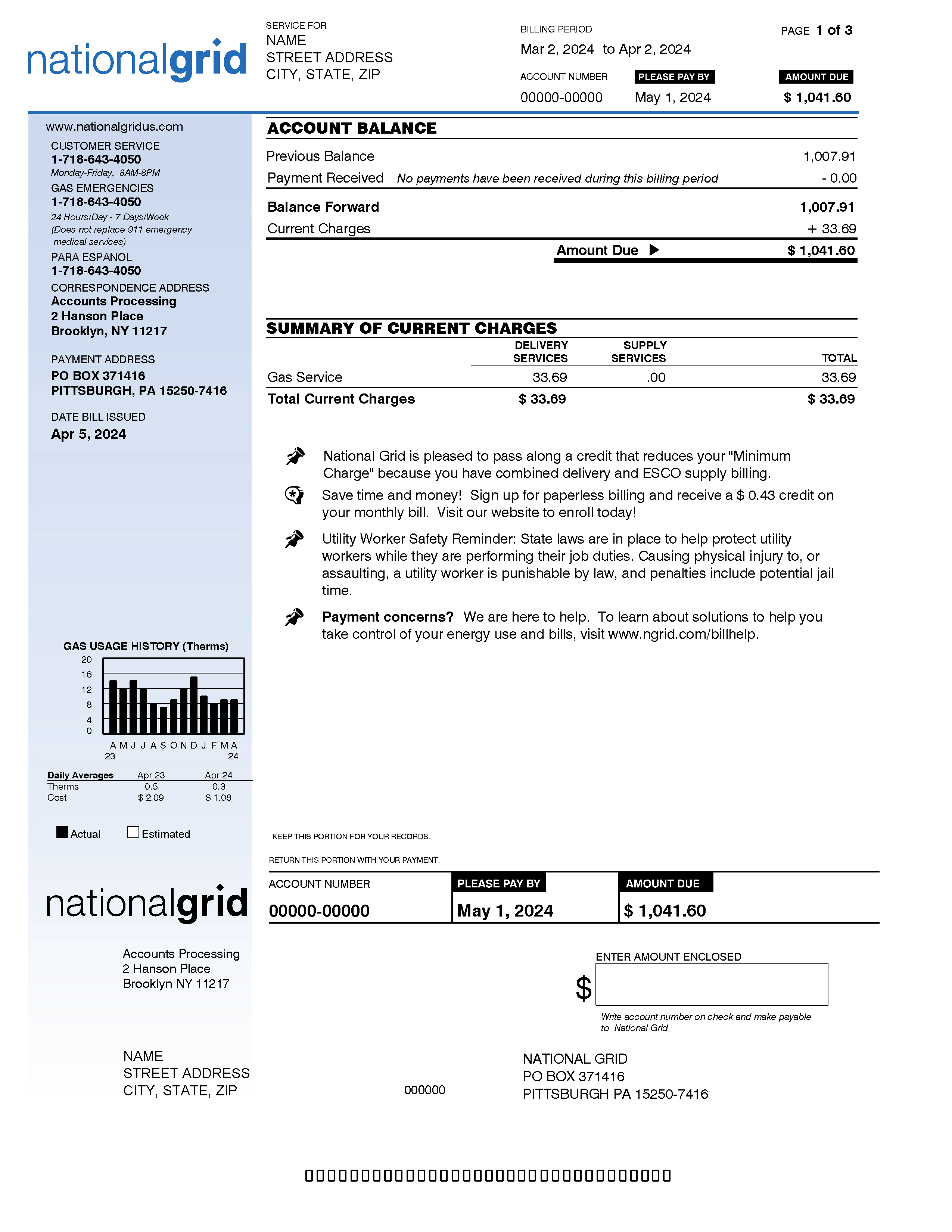Energy Supplier Bill
How to Read Your Bill
Every National Grid bill gives a breakdown of exactly what you are being charged. Review this sample bill and compare it to your own.
Page One
 Billing period refers to the service dates between meter reads. In other words, the day when your meter was read marks the end of a billing period and the beginning of a new billing period. A billing period typically ranges from 27 to 33 calendar days.Your account number is unique to your premise. If you are a National Grid customer with multiple premises, each premise has its own unique account number. Treat your account number as confidential information.This is the dollar($) amount owed to National Grid. What are my payment options?This section shares important about your account, e.g. payment received, budget plan amount recalculations, etc. Click here to view your account and enable notifications.If a payment was not received within the billing period reflected above, the dollar ($) will be added to your new balance - which will be reflected in your amount due.This is the total dollar amount consumed within the billing period. This does NOT include any unpaid bill(s). If you have any unpaid charges, the number reflected here typically lower than the amount due. The dollar($) reflected at the top of your bill is what you pay.This reflects the total dollar($) amount that is owed. If you don't have an unpaid charge from a previous billing period, the dollar($) amount reflected here will be the same as your "Current Charges".This shows your monthly usage for the past year.
Billing period refers to the service dates between meter reads. In other words, the day when your meter was read marks the end of a billing period and the beginning of a new billing period. A billing period typically ranges from 27 to 33 calendar days.Your account number is unique to your premise. If you are a National Grid customer with multiple premises, each premise has its own unique account number. Treat your account number as confidential information.This is the dollar($) amount owed to National Grid. What are my payment options?This section shares important about your account, e.g. payment received, budget plan amount recalculations, etc. Click here to view your account and enable notifications.If a payment was not received within the billing period reflected above, the dollar ($) will be added to your new balance - which will be reflected in your amount due.This is the total dollar amount consumed within the billing period. This does NOT include any unpaid bill(s). If you have any unpaid charges, the number reflected here typically lower than the amount due. The dollar($) reflected at the top of your bill is what you pay.This reflects the total dollar($) amount that is owed. If you don't have an unpaid charge from a previous billing period, the dollar($) amount reflected here will be the same as your "Current Charges".This shows your monthly usage for the past year.